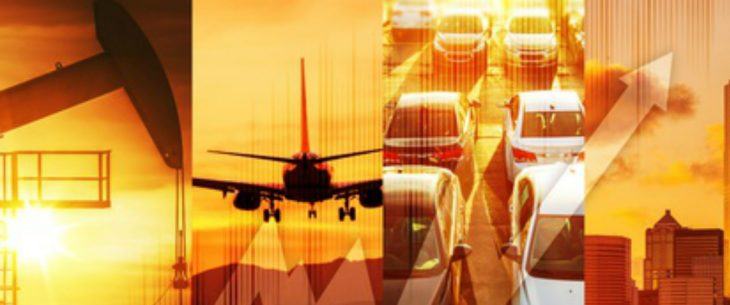Pakko: Arkansas consumer spending to slow after lifting pandemic economy
by November 11, 2021 1:50 pm 695 views

Arkansas has weathered the COVID-19 pandemic economically better than most other states because it didn’t lock down as severely and benefited more from government transfer payments. But the end of those payments means consumer spending, along with retail sales, will come down.
That assessment came from Dr. Michael Pakko, the chief economist and state economic forecaster for the Arkansas Economic Development Institute, during an appearance Nov. 10 before the American Council of Engineering Companies of Arkansas. Pakko said it was his first in-person address outside the classroom since February 2020.
Pakko said the national recession caused by the pandemic lasted only from February 2020 until April 2020, though the nation is still in the recovery phase.
Arkansas fared better than other states and continues to do so because it instituted less severe lockdowns and because of consumer spending growth that has been fueled by government transfer payments. Those stimulus checks and unemployment benefits are worth more here because the cost of living is lower.
Pakko said Arkansas was one of three states – along with Montana and Utah – that didn’t experience a decline in consumer spending in 2020. It was up 0.1% here while declining 2.5% nationwide.
While consumer spending was down more than 20% nationally in April 2020, Arkansas was already recovering then after a downturn that March of about 4-5%. As of August 2021, consumer spending is now at 125% where it was in the second half of 2019.
Pakko said there was a sharp downturn in personal income during the second quarter of 2020, followed by a rapid recovery. As of the beginning of 2021, personal income is above pre-pandemic levels and is on a growth path going forward. He expects it to grow at a trend rate of 5% counting real growth and inflation.
In recent months, consumer spending has been outpacing personal income because the government transfer programs have ended. But that will change.
“There’s really no way that we can continue to have retail sales running as far above the growth rate of personal income as it has been during 2021,” he said. “And so I’m anticipating that in 2022, we’ll see a slowdown in consumer spending, more here in Arkansas than the rest of the country because we’ve already basically spent it all, and we’ll get back to a more sustainable growth path by the end of 2022 and into 2023.”
Pakko said he didn’t see any state-based risks to the continued recovery in Arkansas. Instead, the risks are more national and global: a resurgence in COVID cases and economic restrictions; a drop in consumer confidence; and persistent supply chain disruptions. Longer term concerns include debt market pressures created by government borrowing and money creation, and inflation. The consumer price inflation for October was .9%, the fastest rise since 1990.
“As an economist who worked at the Federal Reserve for 16 years, or really more like 20 years once you incorporate my pre-grad school days, this situation reminds me too much of the 1970s and ‘80s when inflation, stimulus got out of control and we had to reign it in,” he said.
The state’s nonfarm payroll employment saw nearly 10% job losses in April 2020, but nationwide it was nearly 15%. Arkansas lost 127,000 jobs during the recession, the hardest hit sector being accommodations and food services, which lost 41,000 jobs.
Since then, Arkansas has seen a steady recovery to the point that nonfarm payroll employment is 1.7% lower than it was in February 2020, while nationwide employment is down 3.3%. The state recovered 104,600 jobs from April 2020 to September of this year, meaning it’s down 22,600 jobs. The accommodations and food services sector has regained 31,800 jobs, while durable goods manufacturing is actually 6,400 jobs in positive territory. The state and local government sector is down 8,300 jobs, mostly due to lower employment in schools and institutions of higher education.
Pakko forecasted that Arkansas’ employment numbers will return to pre-pandemic levels by the end of the year, while national numbers will return to those levels by early- to mid-2022. However, two years of labor force growth will need to be absorbed. He expects a fairly stable 1% job growth per year moving forward, with 2022’s growth to be more rapid.
Likewise, unemployment rates peaked at 10% in Arkansas in April 2020 and at 14.8% in the United States, but by September they had fallen to 4% in Arkansas and 4.8% nationwide. Metropolitan areas in Arkansas had higher surges in unemployment in general but have since returned to their normal rates below rural areas, though not by much. Unemployment was at 2.2% in Benton and Washington counties in September and was 2.3% in Craighead County.
Pakko expects the fourth quarter to average 4% unemployment in Arkansas, with the numbers to fall to 3.6% by the end of 2022 and to 3.3% in 2023. He noted that labor force participation rates are down 1%.
